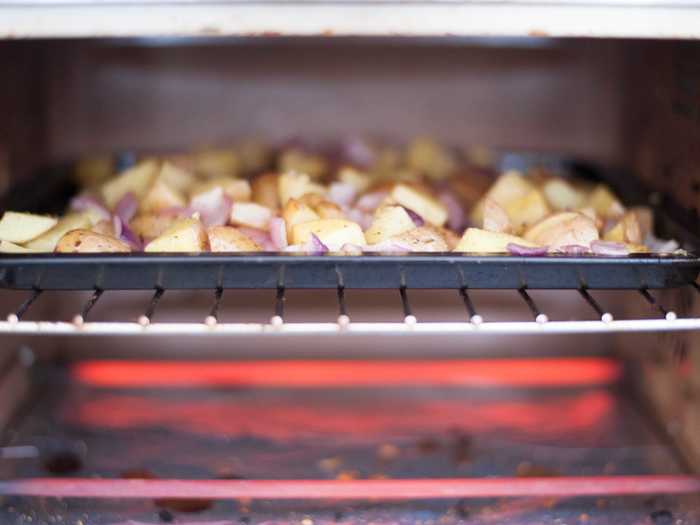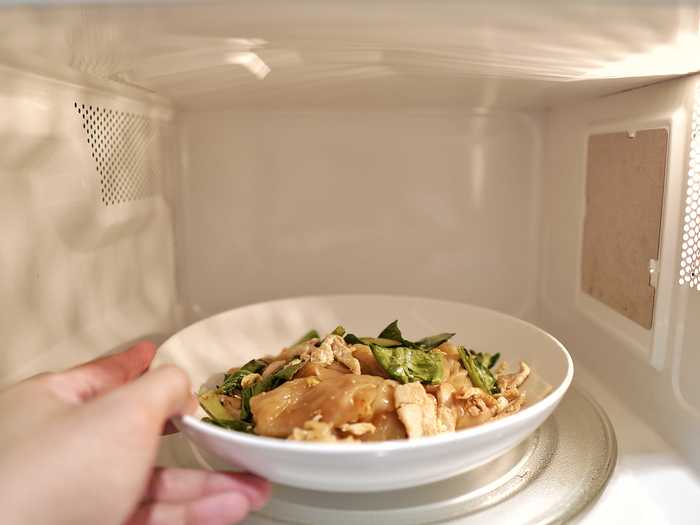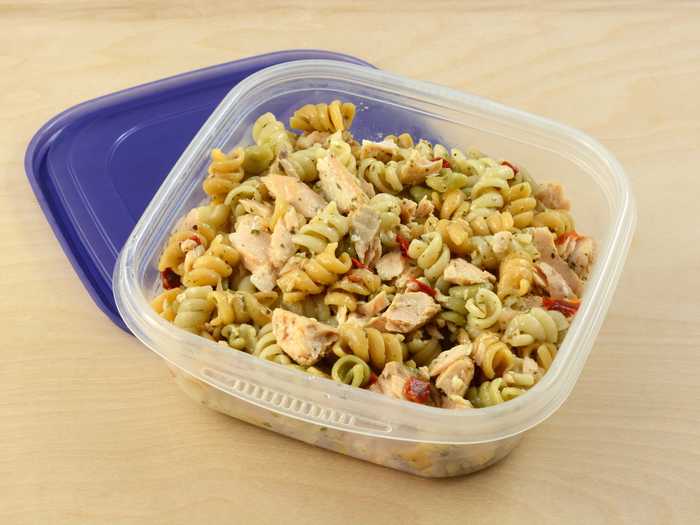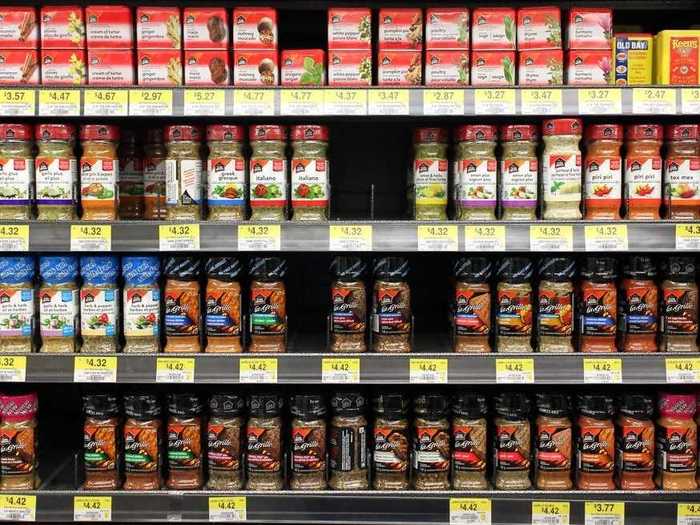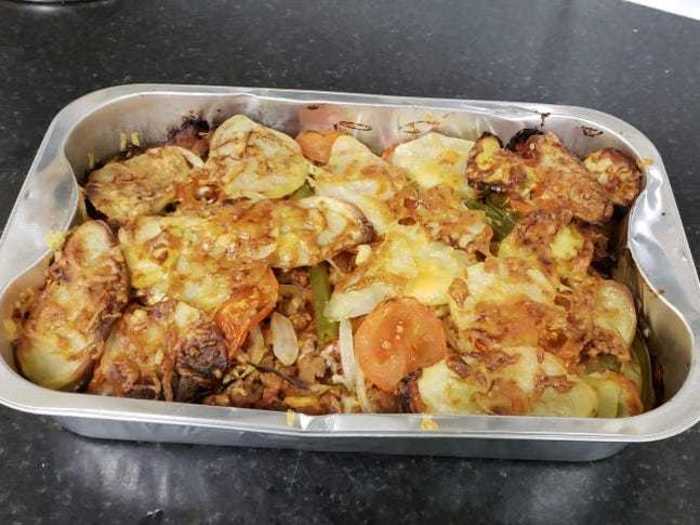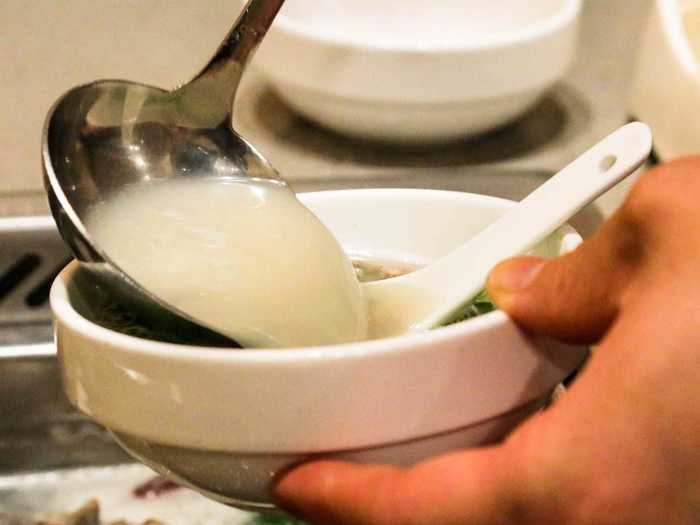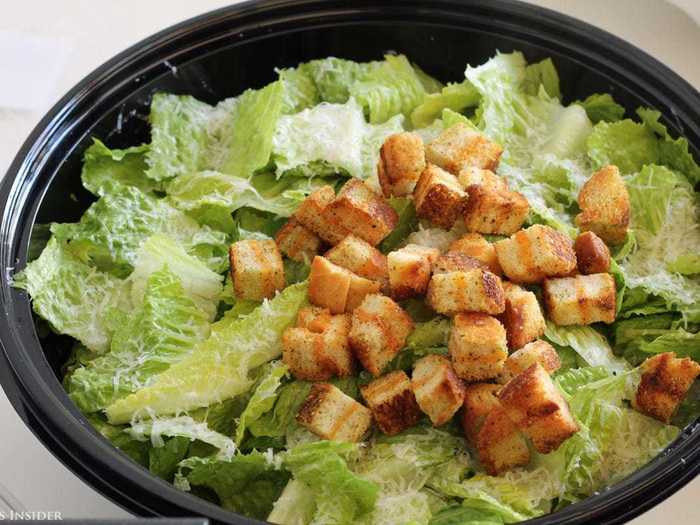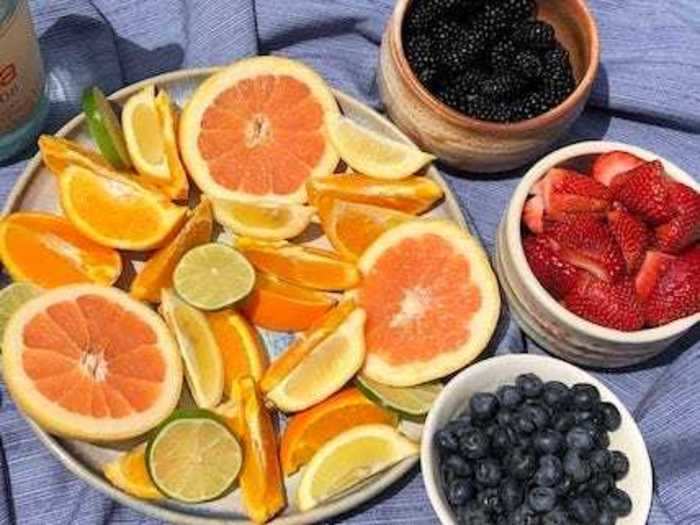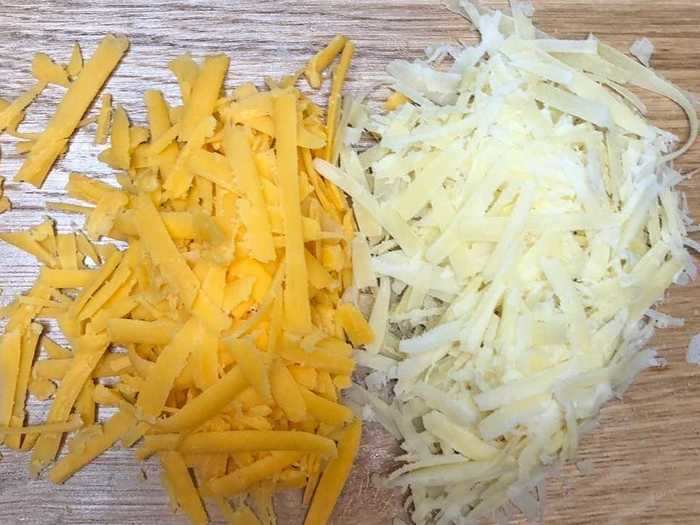These easy tricks will make your reheated leftovers taste better.Monkey Business Images/Shuttershock
- The holiday season is filled with great food, and in turn, lots of leftovers.
- Instead of throwing your leftovers away, you can turn them into a soup or casserole.
- Don't reheat food in the microwave, it'll come out better in the oven or on the cooktop.
Some reheated food can taste bland and end up soggy, giving leftovers a less-than-stellar reputation. But with the holidays around the corner, extra food is almost inevitable.
Instead of throwing out your Thanksgiving dinner, you can turn it into something fresh and delicious with a few easy hacks.
Read on for nine simple tricks to make your leftovers taste like new.
First things first — don't reheat your food in the microwave.
Instead of warming up your food in the microwave, opt for the oven, cooktop, or grill.
Shutterstock
Despite its convenience, the microwave can leave your food mushy and tasting bland. Instead, consider heating up your leftovers in the oven or on the cooktop or grill.
You will likely need a splash of water or a drizzle of olive oil depending on the dish, but pastas soften beautifully on the stove, and meats and vegetables come out of the oven crunchy and soft.
For a smoky alternative, you can freshen up your food by grilling it.
If you do choose to microwave your food, make sure to store leftovers in high-quality containers.
A glass bowl can also work for heating up food in the microwave.
Shutterstock
Although storing food in a glass container is typically better than using a plastic one, a sealable lid with an operable vent is important for fresh leftovers.
When you store food in the fridge, keep the vent closed — new air can dry out the dish and ruin its taste. Then when reheating leftovers, open the vent to allow steam to escape the container. This trick will leave your meal tasting great and not soggy.
To avoid dryness, add moisture to your leftovers before heating them up.
This hack can prevent your leftovers from getting dried out or crusty.
Shutterstock
In addition to using a vented container, you can give leftovers new life with a little bit of moisture.
Different grains and vegetables, like pasta, rice, carrots, and yams, absorb liquid while sitting in the fridge, which needs to be replaced when you prepare them. Just a drizzle or flick of water should do the trick.
Add milk or cream to pasta dishes before reheating, and drizzle meats with a bit of olive oil or butter to keep them tender.
GIve your leftovers an extra kick of flavor by adding spices.
There are countless spices you can try adding to your dishes.
Shutterstock
The quickest way to upgrade last night's dinner is to add some extra seasonings.
This works best if you plan ahead when cooking the meal the first time — you can keep portions of foods, like meats, beans, and veggies, unseasoned. Then, when it's time to reheat them, you'll have a blank slate you can adjust to your liking.
Even if the food was seasoned when it was cooked, you can still add more spices to make the dish taste brand new — even a little salt can go a long way.
Bake your leftovers into a casserole.
You can combine your foods to make a delicious meal that will last for days.
Nasha Smith
To make a casserole, mix a variety of leftovers from every food group into a large dish and bake it in the oven. You'll wind up with a completely new meal.
Best of all, by using already-cooked food, the casserole is ready to eat as soon as it has heated to a food-safe temperature of 165 degrees Fahrenheit.
Turn your leftovers into soups and sauces.
Sweet potatoes and squashes can make excellent pasta sauces.
Irene Jiang / Business Insider
Similar to dumping everything but the kitchen sink into a casserole, you can turn the vegetables, grains, and proteins in your fridge into flavorful soups and sauces before they go bad.
Add your leftovers into a pot with water or broth and bring the mix to a boil for a quick, comforting meal.
And to make a hearty pasta sauce, heat leftover vegetables on the stove, then blend with water, milk, or cream — this works especially well with sweet potatoes and squash.
Make the most of your stale carbs.
You can also make salad croutons.
Melia Robinson/Business Insider
Nothing is more disappointing than having a loaf of bread or bag of chips go stale before you can finish it, but it's easy to transform these leftover foods into coatings and toppings to get the most bang for your buck.
You can blend stale bread into breadcrumbs or make bread pudding to satisfy your sweet tooth.
Additionally, you can use stale chips to coat proteins for a perfectly crunchy exterior or sprinkle crumbs into sweet treats like chocolate chip cookies or brownies for a savory contrast.
And if you didn't manage to eat all your freshly baked cookies in time, you can crumble them on top of ice cream or make cookie butter.
Don't leave your cut fruit out for too long.
Precut, leftover fruit can lose its flavor.
Caroline Fox/Insider
Although fruit is often overlooked as a leftover, it's not uncommon to have containers of sliced melons and berries that you can't finish in one sitting.
Cut fruits in the fridge can quickly lose their fresh, delicious flavor — so you can blend leftovers into smoothies or freeze them and later turn them into a sweet sorbet.
And if you prefer to eat fruit in its whole form, you can drizzle it with a bit of honey or add it to yogurt for an extra kick of flavor.
And when all else fails, just add cheese.
You can use whatever cheese you prefer.
Rachel Askinasi/Insider
Adding cheese to your leftovers is a quick and delicious way to improve the flavor.
Sprinkle it on toward the end of the reheating process to avoid ending up with a greasy mess.

